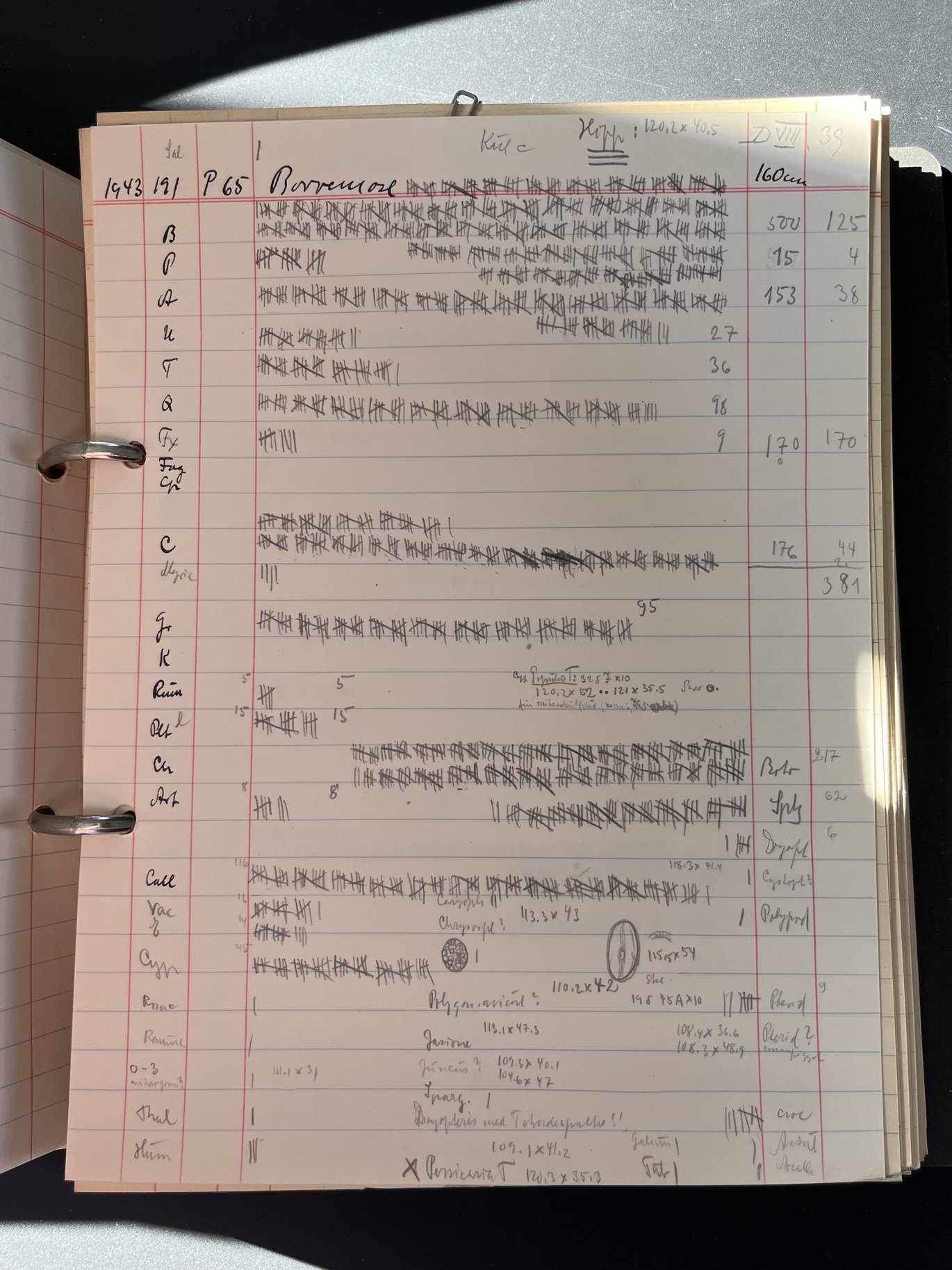The landscape and environmental context of Iron Age ‘bog bodies’
Michelle Farrell visited Copenhagen in May to view reports and other documentation from the archaeological excavations of the Borremose bog bodies

Over the last couple of years, Michelle Farrell has been working with Henry Chapman and David Smith (University of Birmingham) and Nina Helt Nielsen (Museum Silkeborg) on a project which aims to examine the landscape and environmental context of a number of Iron Age ‘bog bodies’ from the UK and Denmark. Previous research on these finds has often been limited to the bodies themselves and aimed to establish, for example, cause of death, stomach contents, and nature of deposition, leaving many open questions as to the characteristics of the landscape and environment into which the bodies were deposited – and ultimately, why the bodies were treated in this way.
Extensive mechanised peat cutting during the 20th century has largely destroyed any palaeoenvironmental archive which might be preserved in the peat in which the bog bodies were preserved, though recent fieldwork at some sites has shown that occasional intact sequences do survive. It is hoped that detailed palaeoenvironmental analysis of these surviving peat sequences, in combination with a re-evaluation of archival material from archaeological and palaeoenvironmental investigations conducted at the time of discovery of the bodies, could provide new understandings of these enigmatic finds.
In May 2024 Michelle and Henry visited the National Museum of Denmark and GEUS archives in order to view reports and other documentation from the archaeological excavations of the Borremose bog bodies by Elise and Knud Thorvildsen, and associated stratigraphic and palynological work carried out in the 1940s and 50s by Alfred Andersen of the DGU, now GEUS. Huge thanks are due to Johan Zakarias Gårdsvoll of the National Museum and Peter Friis Møller of GEUS for their assistance in locating this material and their interest in the project. The trip was a great success, and the team now have the task of placing the results of their own recent fieldwork at Borremose within the context of the archived material. They hope to publish their findings later this year, so watch this space!
